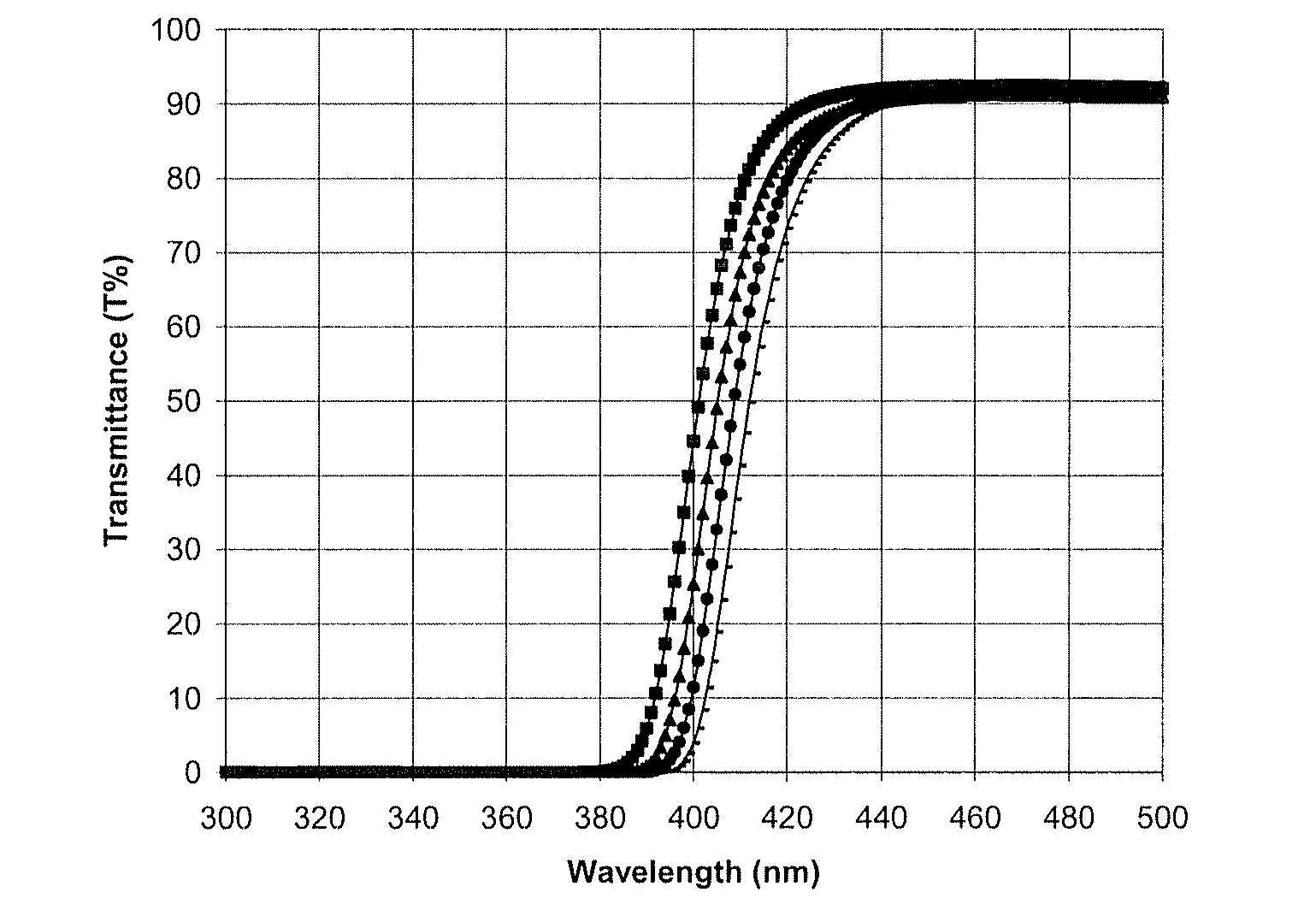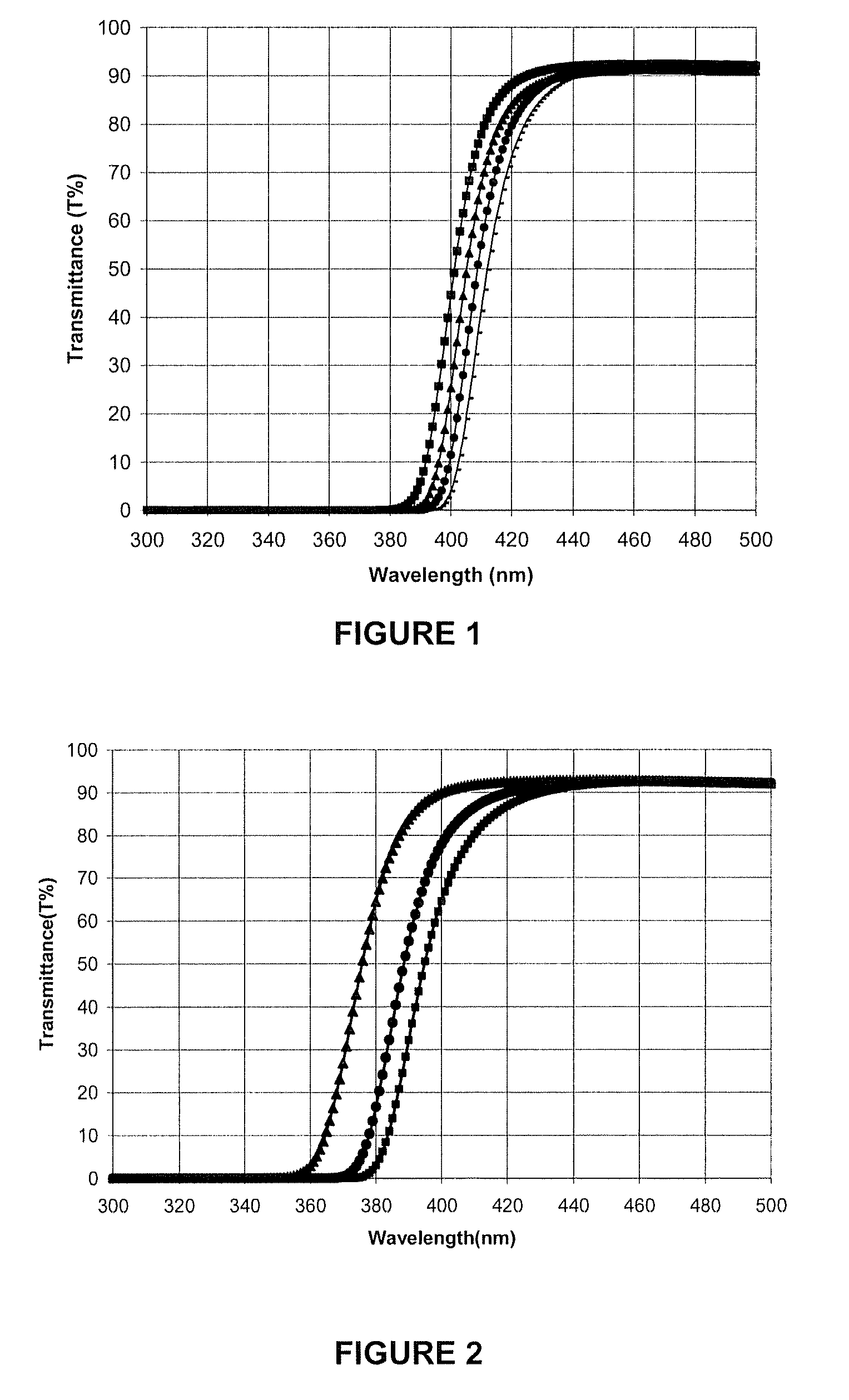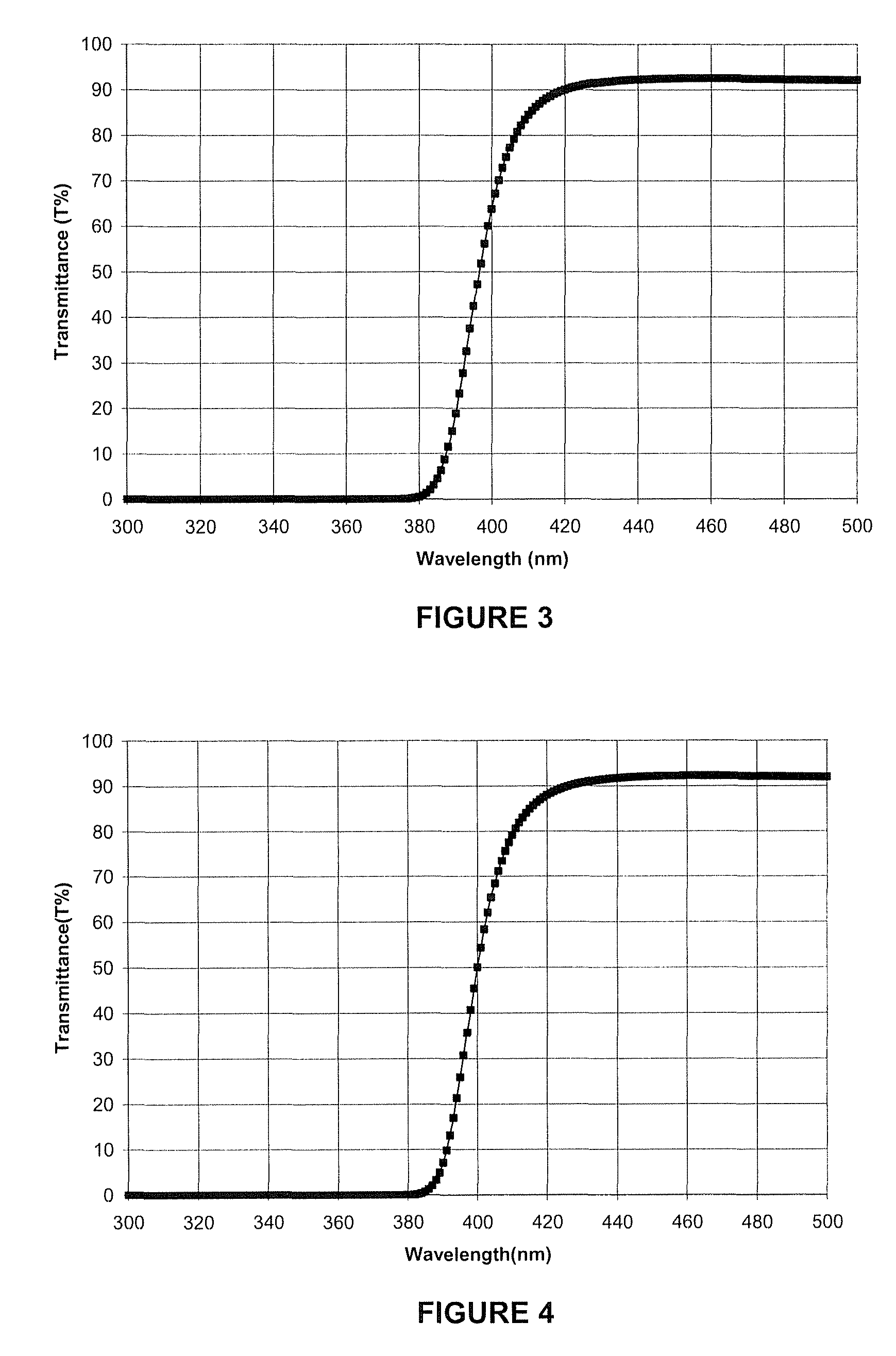Ultraviolet light absorbing optical elements and compositions and methods for manufacture
a technology of ultraviolet light and optical elements, applied in the field of ultraviolet light absorbing plastic optical elements, can solve the problems of macular degeneration, short-term and long-term damage of ultraviolet light on the eye, retinal injuries, etc., and achieve the effects of improving impact resistance, preventing glare, and improving scratch resistan
- Summary
- Abstract
- Description
- Claims
- Application Information
AI Technical Summary
Benefits of technology
Problems solved by technology
Method used
Image
Examples
example 1
[0117]0.05, 0.1, 0.15 and 0.2 g of the UV absorber CGL777MPA-D was mixed with 100 g of CR-39 respectively for twenty minutes. Then 3 g of initiator IPP was added to each mix and stirred for ten minutes. The monomer mixes were then filtered and degassed for 30 minutes before filling into the mould assemblies. The lenses were cured in a typical CR-39 curing cycle as follows:[0118]Start at an oven temperature of 40° C.[0119]Gradually increase the oven temperature to 52° C. over a 9 hour period[0120]Then increase the oven temperature to 80° C. over an 11 hour period[0121]Hold at 80° C. for 1 hour[0122]Cool to 75° C. over a 15 minute period[0123]Hold at 75° C. for mould opening.
[0124]The mould assemblies were then opened to give the required lenses.
[0125]The transmittance was measured on the 2 mm thick 6 based plano lens and is shown in FIG. 1. The yellow index (YI) values for each lens were:
[0126]
CGL777 MPA-DYI0.05%1.310.10%1.820.15%2.570.20%3.33
example 2
[0127]0.01, 0.05 and 0.1 g of the UV absorber Tinuvin 479 were mixed with 100 g of CR-39 for twenty minutes respectively. Then 3 g of initiator IPP was added into each mix and stirred for ten minutes. The monomer mixes were then filtered and degassed for 30 minutes before filling into the mould assemblies. The lenses were cured in a typical CR-39 curing cycle as in Example 1, and the mould assemblies were opened to give the required lenses.
[0128]The transmittance was measured on the 2 mm thick 6 based plano lens and is shown in FIG. 2. The yellow index (YI) values for each lens were:
[0129]
Tinuvin 479YI0.01%0.720.05%1.380.10%2.25
example 3
[0130]0.06 g of the UV absorber Tinuvin 5236 and 100 g of CR-39 were mixed for twenty minutes. Then 3 g of initiator IPP was added and stirred for ten minutes. The monomer mix was then filtered and degassed for 30 minutes before filling into the mould assembly.
[0131]The lenses were cured in a typical CR-39 curing cycle as in Example 1, and the mould assembly was opened to give the required lens.
[0132]The transmittance was measured on the 2 mm thick 6 based plano lens and is shown in FIG. 3. The yellow index (YI) value of this lens was 1.50.
PUM
| Property | Measurement | Unit |
|---|---|---|
| wavelength | aaaaa | aaaaa |
| transmittance | aaaaa | aaaaa |
| wavelength | aaaaa | aaaaa |
Abstract
Description
Claims
Application Information
 Login to View More
Login to View More - R&D
- Intellectual Property
- Life Sciences
- Materials
- Tech Scout
- Unparalleled Data Quality
- Higher Quality Content
- 60% Fewer Hallucinations
Browse by: Latest US Patents, China's latest patents, Technical Efficacy Thesaurus, Application Domain, Technology Topic, Popular Technical Reports.
© 2025 PatSnap. All rights reserved.Legal|Privacy policy|Modern Slavery Act Transparency Statement|Sitemap|About US| Contact US: help@patsnap.com



